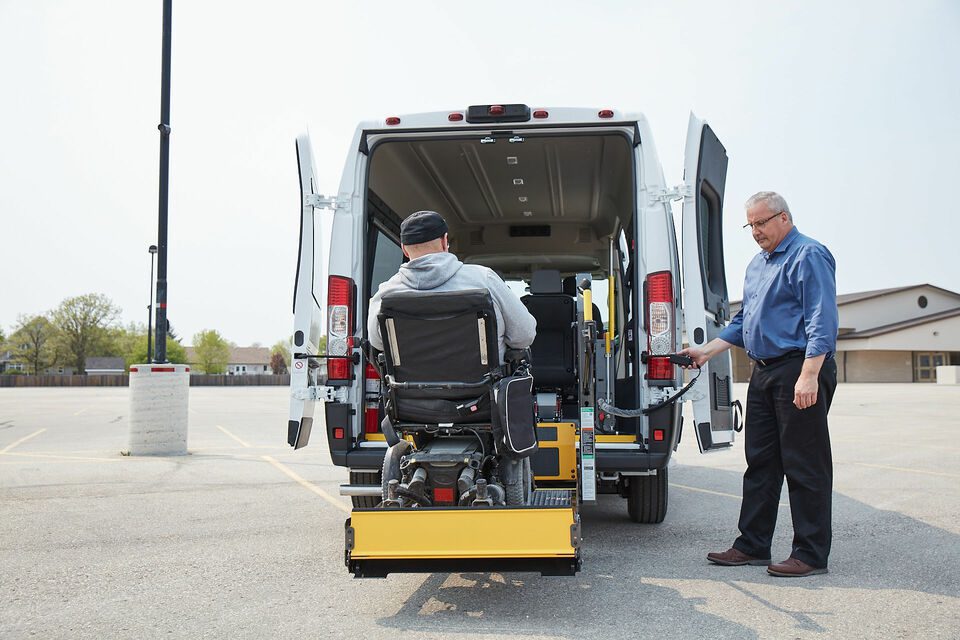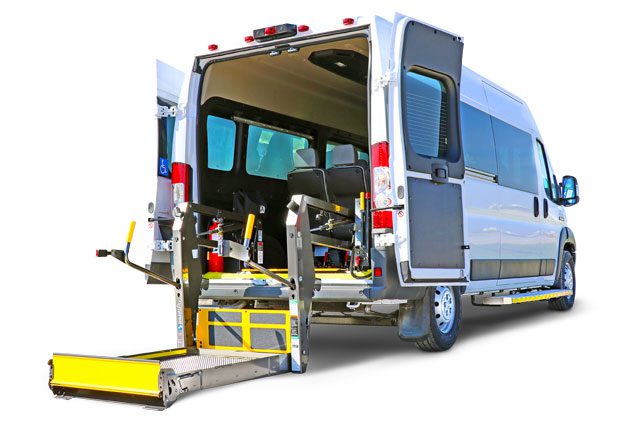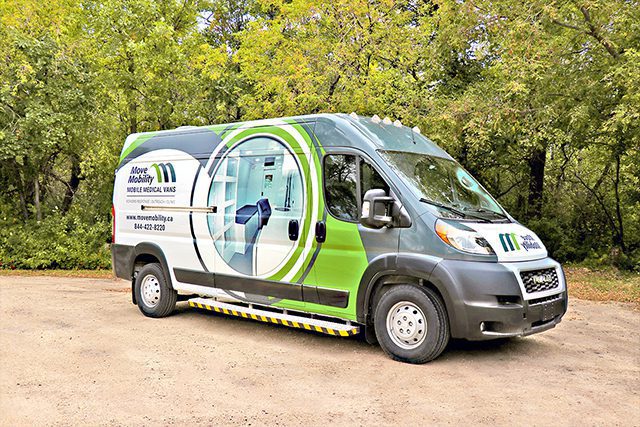So, you’re thinking of getting lifts for your wheelchair vans.
Maybe you’re an organization that transports many wheelchairs, and you’re looking for an entry method that will be quick and efficient. Or, maybe your staff have been voicing their concerns about the physical exertion they experience using a manual ramp.
For whatever reason you’re here, choosing the right mode of getting inside a wheelchair van is vital to the efficiency of your transportation, the comfort of your passengers, and the overall success of your organization.
If you choose the wrong kind of entry method, your passengers could struggle to get on and off the van–adding an extra barrier to your passengers who already experience barriers in their everyday lives.
So, being informed on the ins and outs of powered lifts is essential to making the right choice for your organization.
In this article, you’ll learn how powered lifts work, what their pros and cons are, who they’re right for, and who they’re not right for.
Let’s start by establishing how powered lifts work.
Powered lifts for wheelchair vans: what are they?
Imagine an elevator, only smaller.
The lift is a platform that stays level while moving up and down. When on the ground, you can easily load a wheelchair onto the platform and then push a button, which makes the lift rise up to the floor height. Once the lift platform is level with the floor, the wheelchair can be pushed or driven into the van.
You reverse this process when the passenger exits the van.

Powered lifts for wheelchair vans: what are the pros?
They are very easy for drivers to use
The platform is level with the ground so you don’t need to push hard or physically exert yourself to push a wheelchair onto the platform. A simple press of the button lifts the wheelchair to floor level without any pushing up an incline or “hill”.
In many cases, a lift can reduce the potential for staff injury.
They are accessible to riders with almost any mobility device
The powered lift has a 1,000lb lifting capacity and is 54 inches long and 34 inches wide, which lifts some of the largest and heaviest wheelchairs.
A powered wheelchair lift ensures that your van is accessible to riders with almost any mobility device–from wheelchairs to walkers to almost everything in between.
They have safety features to prevent staff injury
A tested and certified wheelchair lift has many safety features built into its design. These include a spring-loaded mechanical roll stop, safety belt, and alarm. Technician experts design each feature to keep your riders safe while using the lift and prevent staff injury.
Now that you know what the pros are to having a lift installed in your wheelchair van, you may be wondering what the cons are. Read on to find out.
Powered lifts for wheelchair vans: what are the cons?
They often need repairs or adjustments
Because they have a lot of moving parts, and they are electronic and hydraulic, the lifts can break down. Sometimes this means drivers have to use a pump to lift it manually. It also means that the lift will have to be serviced.
If you’re experiencing an issue with your lift, check out this article to see how you can troubleshoot it.
They can break down in cold weather
If you’re not frequently using the lift during cold weather, it may freeze up or become less reliable. Dirt, snow, ice, or debris may collect on the lift, so you’ll have to clean it and practice regular maintenance to keep your wheelchair lift operating at its best.
They require frequent use to avoid issues
To keep your wheelchair lift in tip-top shape, it is recommended to raise and lower the lift once a week to maintain its hydraulic system, even if you are not transporting wheelchairs. This helps prevent mechanical parts from seizing up.
Leaving the wheelchair lift unused for weeks or months can result in issues when you try and use the lift again.
They require frequent maintenance to run properly
A powered wheelchair lift needs regular maintenance to keep it running smoothly. You will have to frequently lubricate the mechanical parts of the lift, clean off snow and debris, and get safety checks from mobility experts.
They take longer to load/unload passengers
While a wheelchair lift is relatively easy to use, it typically takes longer to load and unload wheelchair passengers. The time to raise and lower the lift can take a few minutes longer than simply pushing wheelchair passengers up a ramp.
Lifts can cause anxiety in some passengers
Elderly wheelchair users and persons with disabilities or conditions such as dementia may feel anxious using a lift. This is because a lift will suspend the user a few feet above the ground, which may be uncomfortable for some users. If this is the case, you may have to consider a powered ramp or a manual ramp.
Now that you have a deep understanding of the pros and cons of powered lifts, take a look at this next section that delves into who lifts are and aren’t right for.
Powered lifts for wheelchair vans: who are they right for?
Lifts may be the right fit for you if…
- You have many wheelchair passengers, particularly manual wheelchairs
- You have smaller or semi-retired staff who may find it hard to push wheelchairs up a ramp
Powered lifts for wheelchair vans: who are they not a fit for?
Lifts may not be the right fit for you if…
- You live in a location that gets very cold and has rough winter roads
- You mainly transport walker-users and cane-users
- You mainly transport elderly wheelchair users, persons with disabilities, or conditions such as dementia who may feel anxious using a lift
Your next steps to getting a powered lift for your wheelchair van
You came to this article to learn the pros and cons of powered lifts.
Now, you know how powered lifts work, what their pros and cons are, who they’re right for, and who they’re not right for.
If you’re still not sure what entry method is right for you, talk to a MoveMobility expert today.
Or, check out these related articles:







